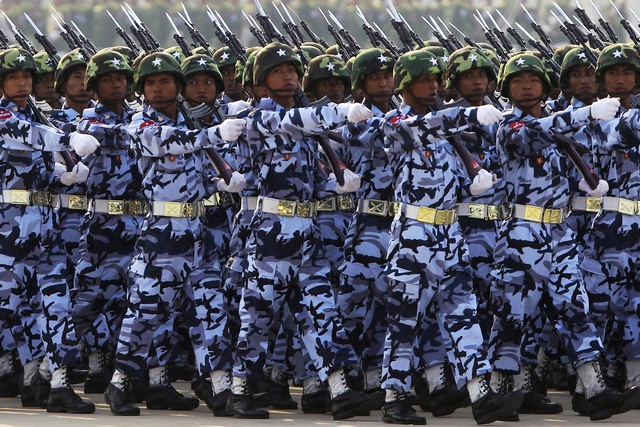On June 27, it will be one year since the Myanmar government made a commitment to the United Nations to stop recruiting and using children as soldiers. The action plan, which was signed after five years of negotiation, marked both an acknowledgement of a longstanding problem and a willingness to correct the practice.
However, there are signs that the Myanmar military’s commitment to ending underage recruitment has yet to end this practice. The Tatmadaw has continued to recruit and use children since it signed the action plan, although in lower numbers than those previously reported.
It has so far only released 66 children from its ranks, a fraction of those believed to be recruited by its troops since the UN started actively monitoring this issue have been released. It continues to stall UN access to identify and release children from some of its military sites despite having signed an agreement to do so. The Border Guard Forces (BGFs), which are within the remit of the action plan and for whom the Myanmar military is responsible, have felt no pressure to initiate steps to verify, demobilise or rehabilitate children in their ranks.
The UN Country Task Force has had no access to BGF units to assess the numbers of child soldiers present in their ranks. Similarly, no access has been granted to non-state armed groups, several of whom are ‘listed’ in the UN Secretary-General’s report as parties who recruit and use children.
The UN Secretary General’s 2013 report on children and armed conflict in Myanmar shows that the government has taken some steps to strengthen recruitment procedures in the Tatmadaw and thereby helping to prevent future recruitment of children. But these steps forward fall short of what is needed to ensure under-18s do not serve in the armed forces.
A greater understanding of why children end up being recruited as soldiers in state armed forces will help speed up a solution. The reasons are several, and complex. Child soldiers are not simply a by-product of being born in militarised societies, nor can they be explained by simplistic socio-economic pull and push factors.
[pullquote] “Armed conflict can never be an excuse for the unlawful recruitment of children or their use in hostilities” [/pullquote]
Our research shows that the Myanmar military has, mostly forcibly, recruited children to meet recruitment targets both in fighting and support roles. Children among the poor and uneducated have been targeted with false threats of legal action, persuasive language and promises of salaries.
Recruitment into armed opposition groups is driven by an equally complex set of factors: a desire to protect their community and immediate family from the Tatmadaw, revenge, and a desire to fight for the recognition of their ethnic identity and nationality.
Whatever the reason children join armed groups in Myanmar, armed conflict can never be an excuse for the unlawful recruitment of children or their use in hostilities. The ceasefire agreements between the government and some armed groups could offer a new opportunity for the safe release of children, as well as opening up the prospect of protecting children from any future military association with these groups.
However, the government’s continuing refusal to grant access to certain areas of the country on grounds of national security has prevented UN engagement with these groups to conclude action plans, as well as independent monitoring and the safe release of children from their ranks.
Earlier this month, Myanmar hosted the World Economic Forum on East Asia, with over a thousand participants from 55 countries marking in good measure the country’s progress towards international engagement. At the inaugural speech, President Thein Sein reiterated his government was “working hard” to move from military rule to democracy, to end the multiple armed conflicts and to reform the economy.
Now is the time for the government to start delivering on its commitments, and most of all to the children of Myanmar. Professionalizing the armed forces, strengthening its oversight mechanisms and progressing towards the resolution of the armed conflicts should all be significant opportunities to protect children from involvement in armed conflict.
The action plan provides a framework for reforming the military and for allowing the UN and other humanitarian actors to engage with armed opposition groups with the view to release children. International pressure and assistance can play a part in this. But the Myanmar Government has to ensure that the commitments in the action plan are translated into effective practical measures to end underage recruitment in Myanmar.
Richard Clarke is the director at Child Soldiers International
Editor’s note: At the author’s request, Myanmar has been used in this article rather than Burma



